The sacred pilgrimage to America’s most famous national parks has turned into an annual battle for parking and permit slots.
You plan a wilderness escape to Yosemite or Zion and wind up navigating timed-entry systems, mandatory shuttles, and lines rivaling a theme park. This isn’t freedom; it’s bureaucracy dressed up in granite and red rock.
The solution isn’t staying home; it’s simply shifting your focus. Across the country, state parks are quietly offering landscapes of equal, and often superior, majesty without the maddening congestion.
They provide the intimate wildlife viewing, the concentrated geological drama, and the pure solitude you actually crave. Forget the iconic bottlenecks.
We’ve curated a list of 13 stunning State Park alternatives that deliver world-class natural awe and save you hours of frustration. Prepare to swap the crowd for the canyon floor.
1. Instead of Yellowstone, Discover South Dakota’s Custer State Park
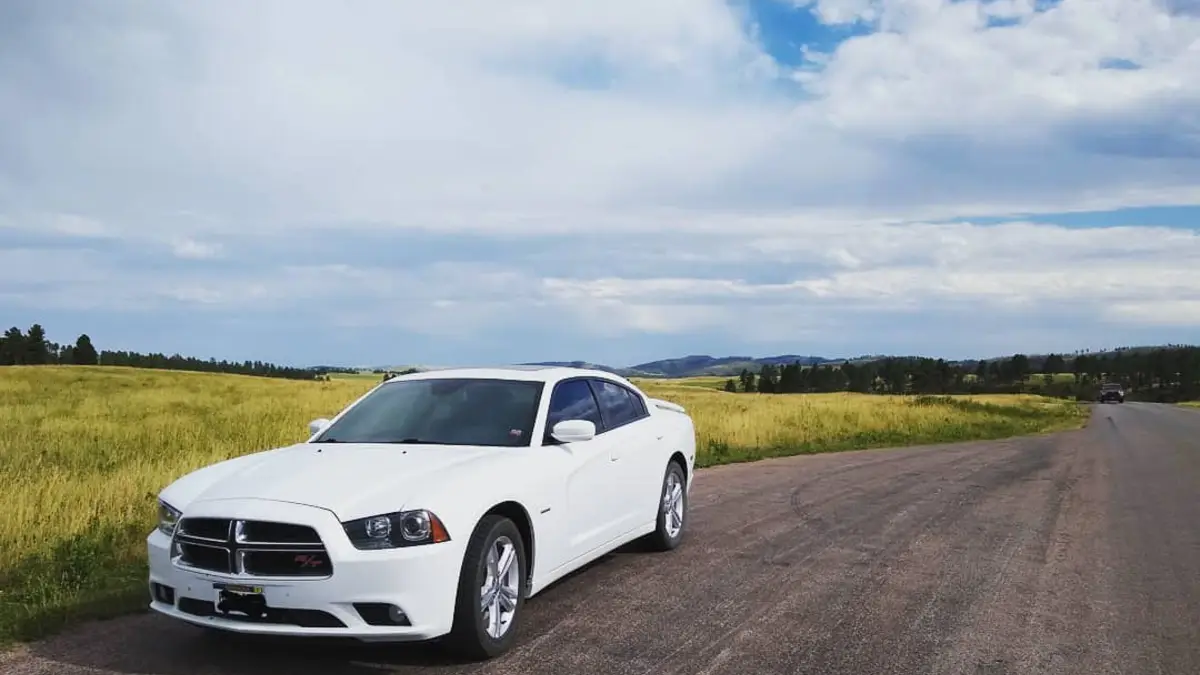
The Icon & The Issue: As the world’s first national park, Yellowstone is a legend. Its geothermal wonders and abundant wildlife are unparalleled. However, navigating this 2.2-million-acre wilderness means sharing it with the 4.5 million other visitors it hosted in 2023, a number that can swell to over 30,000 entries on a single peak summer day.
The Superior Escape: Nestled in the Black Hills, Custer State Park is a 71,000-acre sanctuary that offers a more intimate and accessible wildlife spectacle. The experience here is not one of hoping to spot a distant animal, but of being immersed in its world.
The park is home to one of the nation’s largest free-roaming bison herds, numbering around 1,500 strong, and the Wildlife Loop Road brings visitors directly into their domain.
Here, a “traffic jam” is a welcome event, caused by a massive bull ambling across the pavement. Beyond the plains, the park’s topography shifts dramatically.
The Needles Highway is a marvel of engineering, a 14-mile ribbon of road that threads through surreal granite spires and impossibly narrow tunnels, while the tranquil waters of Sylvan Lake reflect the surrounding rock formations like a mirror.
This park demonstrates a different, more hands-on approach to stewardship. While Yellowstone represents a vast, preserved wilderness, Custer practices a form of “curated conservation.”
Its bison herd is actively managed through an annual roundup, a public event where cowboys and park staff on horseback drive the thundering animals into corrals for health checks and sorting.
This management practice, which includes a public auction to maintain a sustainable herd size, transforms conservation itself into a powerful educational tool and an unforgettable spectacle.
This approach shapes the visitor experience, shifting it from a game of chance in a vast landscape to a near-guaranteed encounter with a thriving, managed ecosystem.
Insider’s Guide:
- Don’t Miss: The annual Buffalo Roundup, held the last Friday in September, is a must-see event that feels like a scene from the Old West. The Bison Center, opened in 2022, offers excellent interpretive displays about the herd’s history and the park’s conservation efforts.
- Best For: Unparalleled up-close wildlife viewing, breathtaking scenic drives, and family-friendly lake activities.
- Pro Tip: Drive slowly through the southern part of the park to meet the “begging burros.” These friendly descendants of pack animals often greet cars, though official park policy discourages feeding them.
An Old West Spectacle
Experience the thunder of hooves at the annual Buffalo Roundup, held on the last Friday of September, as cowboys and cowgirls drive the park’s massive herd.
The Famous “Begging Burros”
Don’t be surprised if a friendly face greets your car in the southern park areas. These are the descendants of pack animals from the past.
A Legacy of Conservation
Deepen your understanding of the American Bison at the Bison Center. Its modern displays beautifully narrate the herd’s journey and the park’s conservation story.
2. Instead of Arches, Discover Utah’s Goblin Valley State Park
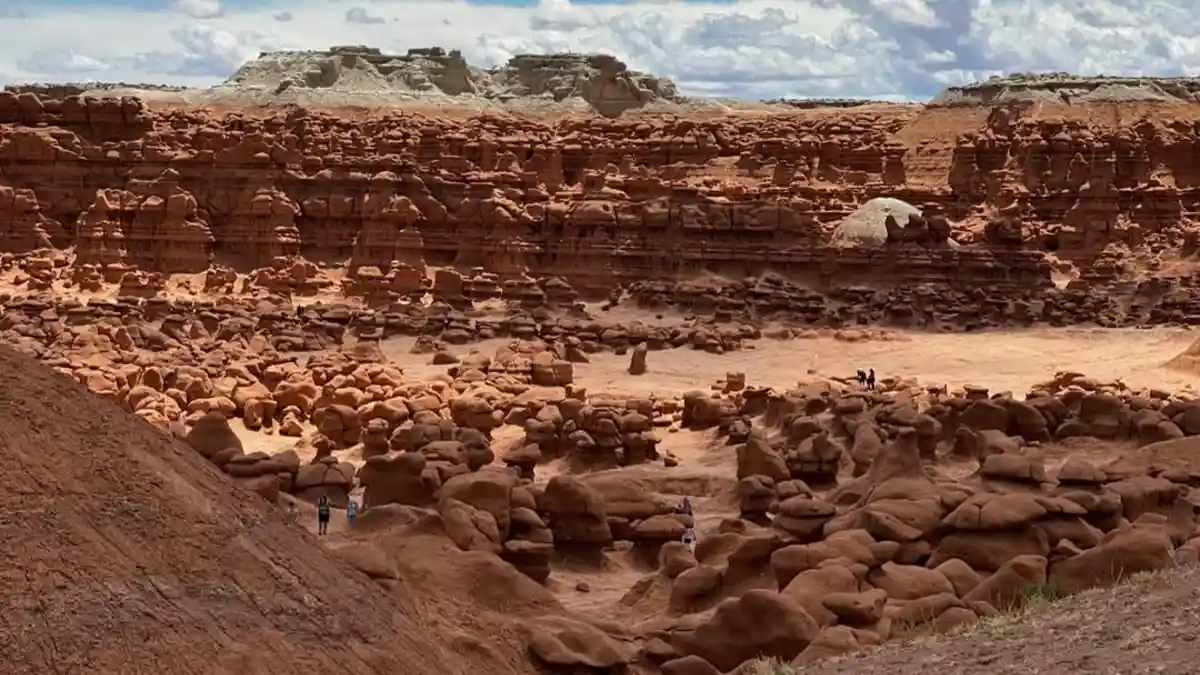
The Icon & The Issue: With its more than 2,000 natural sandstone arches, Arches National Park is a global icon of the American Southwest.
This fame, however, has led to immense pressure on its fragile high-desert ecosystem, attracting nearly 1.5 million visitors annually and forcing the implementation of a strict timed-entry reservation system during peak months.
The Superior Escape: A short drive away lies a landscape that feels like a different planet entirely. Goblin Valley State Park is a surreal basin filled with thousands of whimsical sandstone formations, or “hoodoos,” affectionately called goblins.
The park’s main attraction, the Valley of the Goblins, is often compared to Mars for its unearthly appearance. What truly sets it apart from its more famous neighbor is the philosophy of access.
While Arches channels visitors along designated trails to protect delicate biological soil crusts, Goblin Valley encourages unstructured exploration.
Visitors are free to wander among the goblins, creating their own paths and discovering hidden nooks. This fosters a sense of imaginative play and personal discovery that is increasingly rare in the nation’s more popular parks.
The contrast between these two parks highlights a divergence in how fragile landscapes are managed. The massive crowds at Arches necessitate a model of “prescribed observation” from a distance.
Its visitor guides and signage emphasize the importance of staying on trails to prevent damage to the ecosystem. Goblin Valley, with a fraction of the visitors and a more durable sandstone floor in its main valley, can offer a cherished model of “unstructured interaction.”
The choice for a traveler is not simply between arches and goblins, but between viewing nature from a curated path and immersing oneself within a natural sculpture garden.
Insider’s Guide:
- Don’t Miss: The Valley of the Goblins is the heart of the park, offering limitless exploration. For the truly adventurous, the park is a gateway to world-class canyoneering routes in the adjacent San Rafael Reef.
- Best For: Family adventures, imaginative exploration, and otherworldly photography, especially at sunrise or sunset when the goblins cast long, dramatic shadows.
- Pro Tip: As a designated International Dark Sky Park, Goblin Valley offers breathtaking stargazing. Reserve a campsite or one of the two unique yurts to experience the Milky Way in its full glory.
An Unearthly Playground
Wander through a maze of sandstone figures, known as “goblins” or hoodoos, sculpted by millions of years of wind and water erosion.
Capture the “Golden Hour”
The park transforms during sunrise and sunset. The low-angle light creates long, eerie shadows, making for truly unforgettable and dramatic photos.
Under a Celestial Canopy
As a certified Dark Sky Park, Goblin Valley boasts one of the darkest night skies on Earth, offering a stunning view of the Milky Way galaxy.
| Metric | Arches National Park | Goblin Valley State Park |
| Annual Visitors | ~$1.5$ Million (2022/2024) | ~$300,000$ (FY 2019) |
| Key Feature | Natural Stone Arches | Sandstone “Goblins” (Hoodoos) |
| Visitor Access | Designated Trails, Timed Entry | Free-Roam Exploration |
3. Instead of Zion, Discover Nevada’s Valley of Fire State Park
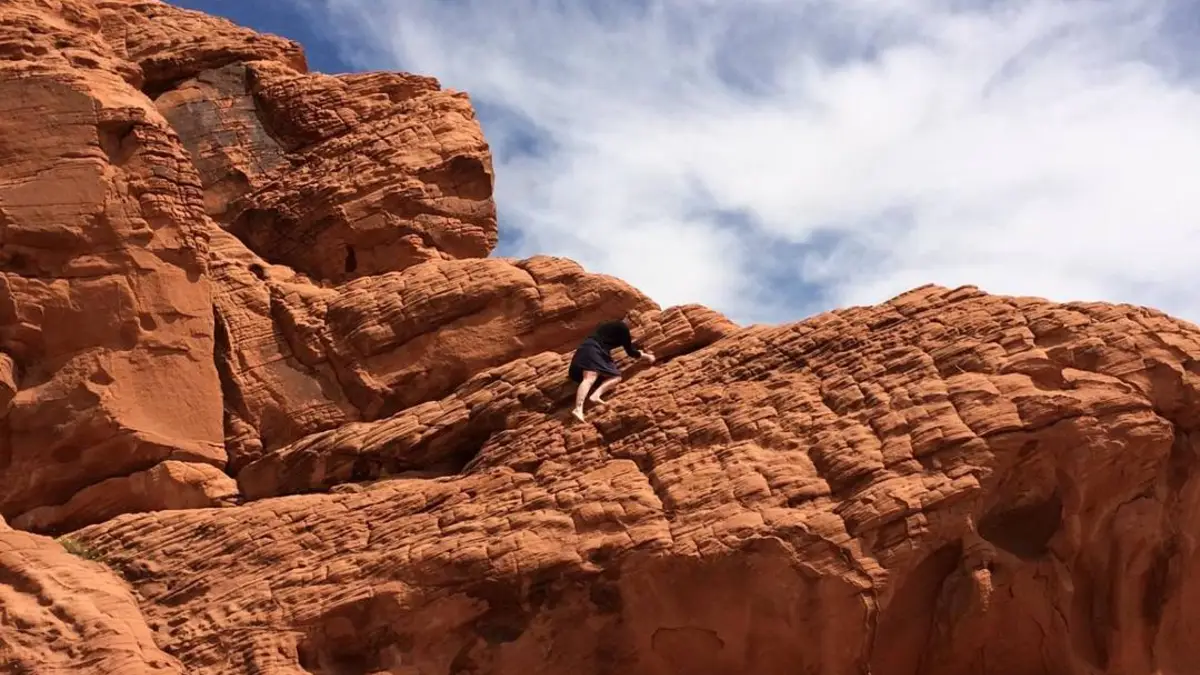
The Icon & The Issue: The towering sandstone cliffs of Zion National Park, carved over millennia by the Virgin River, represent one of the most dramatic landscapes in the country. This drama, however, now comes with a crowd.
With 4.6 million visitors in 2023, the park’s main canyon is so congested that access is largely restricted to a mandatory shuttle bus for most of the year, and coveted hiking permits for trails like Angels Landing are issued via a competitive lottery system.
The Superior Escape: Just an hour’s drive from the neon glow of Las Vegas, Valley of Fire State Park offers a similar red-rock grandeur without the logistical hurdles. Spanning 46,000 acres, the park is a masterpiece of vibrant Aztec sandstone, petrified trees, and ancient petroglyphs dating back more than 2,000 years.
The main road winds through a landscape so intensely colored it appears otherworldly. Short, rewarding trails lead to iconic formations like the Fire Wave, where undulating stripes of red and white sandstone create a photographer’s dream, and Atlatl Rock, where a metal staircase leads to a panel of remarkably preserved petroglyphs.
The park delivers a concentrated dose of the Southwest’s beauty in a compact and easily navigable package.
The park’s proximity to a major tourist hub like Las Vegas creates a unique visitor dynamic. While Zion is a destination that requires dedicated, multi-day planning, Valley of Fire serves as a perfect day trip or an accessible “add-on” adventure.
This allows travelers to combine the urban energy of the city with the profound silence of the desert, a feat nearly impossible with more remote national parks.
This highlights the distinct value of state parks situated near major metropolitan areas, offering world-class nature without demanding a full expedition.
Insider’s Guide:
- Don’t Miss: The hike to the Fire Wave is essential for its iconic, swirling sandstone. The Mouse’s Tank trail is a simple, sandy walk through a canyon that leads to more petroglyphs and a natural water basin.
- Best For: Scenic driving, short but spectacular hikes, and exploring ancient Native American history.
- Pro Tip: Visit during the “golden hours” of early morning or late afternoon. The low-angle sunlight ignites the rock formations, deepening their color to an intense, fiery red. Be aware that some trails close during the summer months due to extreme heat.
| Metric | Zion National Park | Valley of Fire State Park |
| Annual Visitors | ~$4.6$ Million (2023) | ~$800,000$ |
| Key Feature | Towering River-Carved Canyons | Vivid Red Aztec Sandstone Formations |
| Access | Mandatory Shuttle, Hike Permits | Scenic Drive, Open Access |
4. Instead of the Grand Canyon, Discover New York’s Letchworth State Park
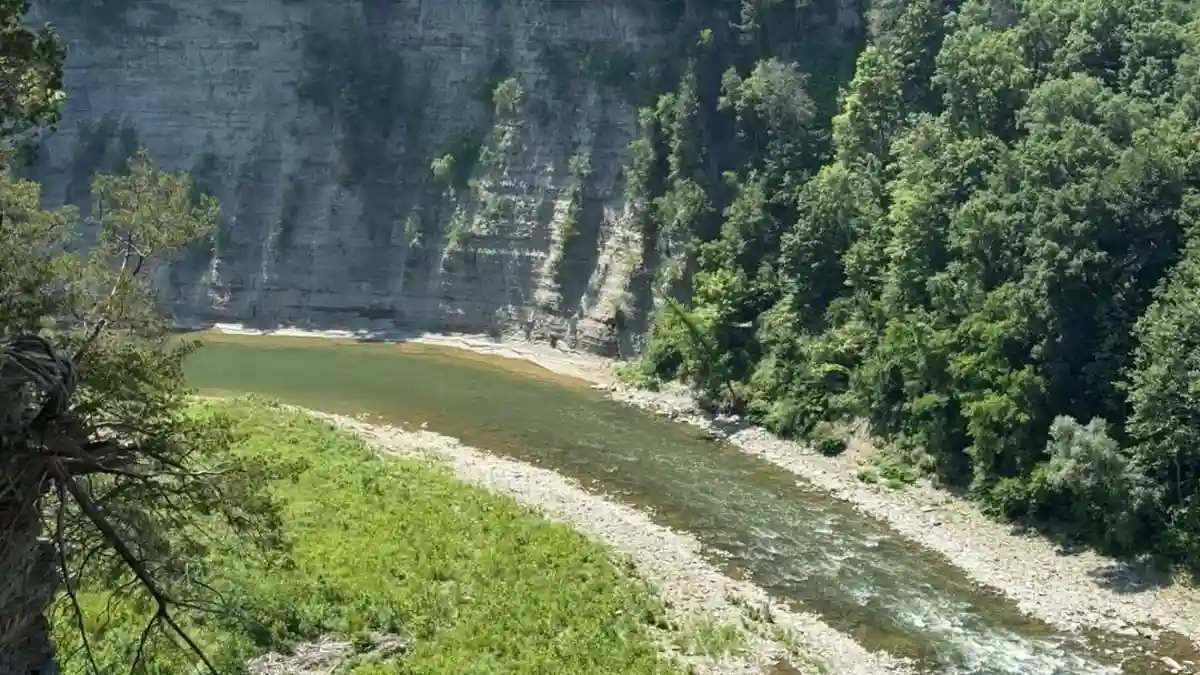
The Icon & The Issue: The Grand Canyon is a geological titan, a world wonder that defies description and draws 4.7 million visitors annually to its rim.
The sheer scale can be overwhelming, and the most popular viewpoints are often bustling with activity.
The Superior Escape: On the other side of the country, Letchworth State Park offers a spectacle of similar geological grandeur, earning it the title “Grand Canyon of the East”.
For 17 miles, the Genesee River carves a gorge up to 550 feet deep through sheer rock walls. But unlike its arid Arizona counterpart, Letchworth is a lush, verdant canyon, home to three major waterfalls and dozens of smaller cascades.
The park’s 66 miles of trails offer panoramic views, and visitors can even experience the gorge from a hot-air balloon. The historic Glen Iris Inn, once the estate of the philanthropist who gifted the land to the state, provides elegant lodging with views of the Middle Falls.
Letchworth proves that a “grand canyon” experience is not exclusive to the desert Southwest, offering a more intimate and lush version of geological awe.
Insider’s Guide:
- Don’t Miss: The three main waterfalls—Upper, Middle, and Lower Falls—are the park’s centerpiece. The Autism Nature Trail, a one-mile loop with eight sensory stations, is a pioneering, inclusive trail designed for visitors of all abilities.15
- Best For: Waterfall viewing, hiking through lush forests, and stunning fall foliage.
- Pro Tip: While the west side of the park is more developed, the eastern side offers a 24-mile section of the Finger Lakes Trail for more rugged, less-trafficked hiking.
| Metric | Grand Canyon National Park | Letchworth State Park |
| Annual Visitors | ~$4.7$ Million (2022) | ~$800,000$ |
| Key Feature | Immense Arid Canyon | Deep, Verdant Gorge with Waterfalls |
| Ecosystem | High Desert | Temperate Forest |
5. Instead of Olympic, Discover Washington’s Moran State Park
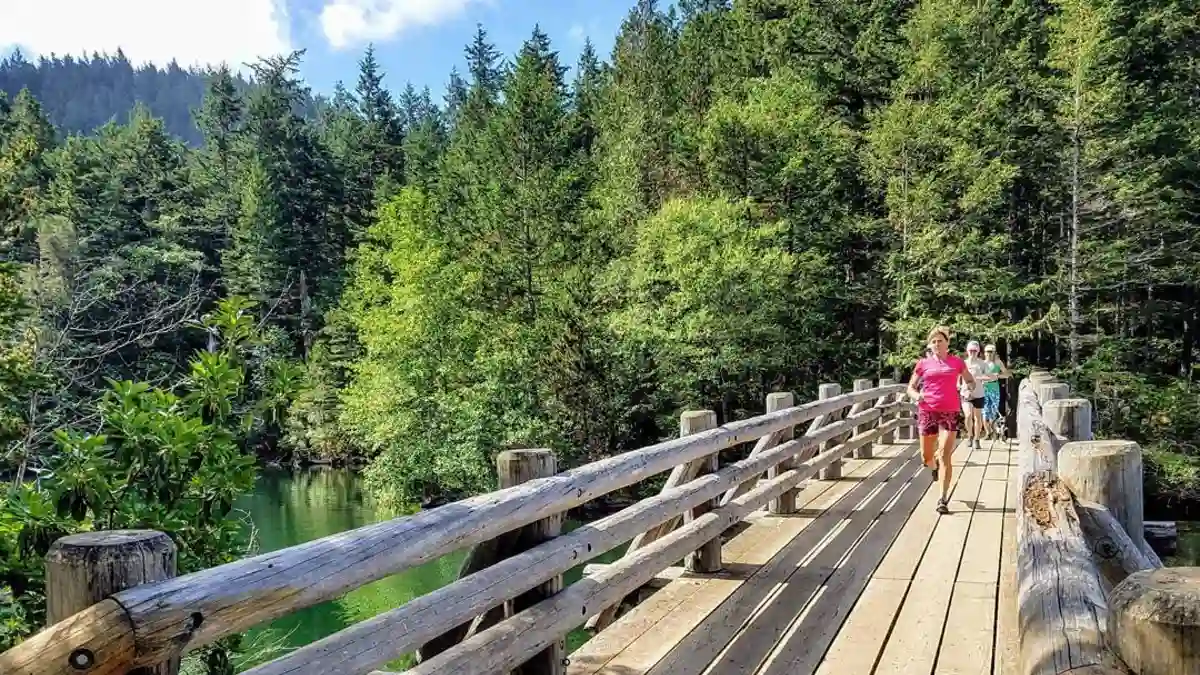
The Icon & The Issue: Olympic National Park is a treasure of biodiversity, encompassing three distinct ecosystems from temperate rainforests to glaciated peaks and rugged coastline. Its accessibility from Seattle makes it a popular destination, drawing 2.9 million visitors in 2023.16
The Superior Escape: For a more secluded island experience, Moran State Park on Orcas Island is a perfect alternative.
The journey itself—a scenic ferry ride through the San Juan Islands—acts as a natural filter, ensuring the park never feels overrun. The 5,252-acre park is a wonderland of dense forests, five freshwater lakes, and 38 miles of trails.
The highlight is the drive or hike to the summit of Mount Constitution, the highest point in the San Juan Islands. From the stone observation tower at the top, panoramic views stretch across the archipelago to the Cascade Mountains and Mount Baker.
Visitors can swim, kayak, or paddleboard on the placid waters of Cascade Lake or find solitude on the forested trails around Mountain Lake.
Insider’s Guide:
- Don’t Miss: The 360-degree view from the Mount Constitution observation tower is unforgettable. Orcas Adventures offers boat and kayak rentals on Cascade Lake.
- Best For: Scenic vistas, freshwater lake recreation, and a true sense of island escape.
- Pro Tip: For a unique stay, reserve a platform “glamping” tent offered by LEANTO in the South End Campground from June through September.
| Metric | Olympic National Park | Moran State Park |
| Annual Visitors | ~$2.9$ Million (2023) | Not specified, but significantly lower |
| Key Feature | Diverse Ecosystems (Rainforest, Coast, Mountains) | Island Summit Views & Freshwater Lakes |
| Access | By Car | By Ferry to Orcas Island |
6. Instead of Redwood, Discover California’s Prairie Creek Redwoods State Park
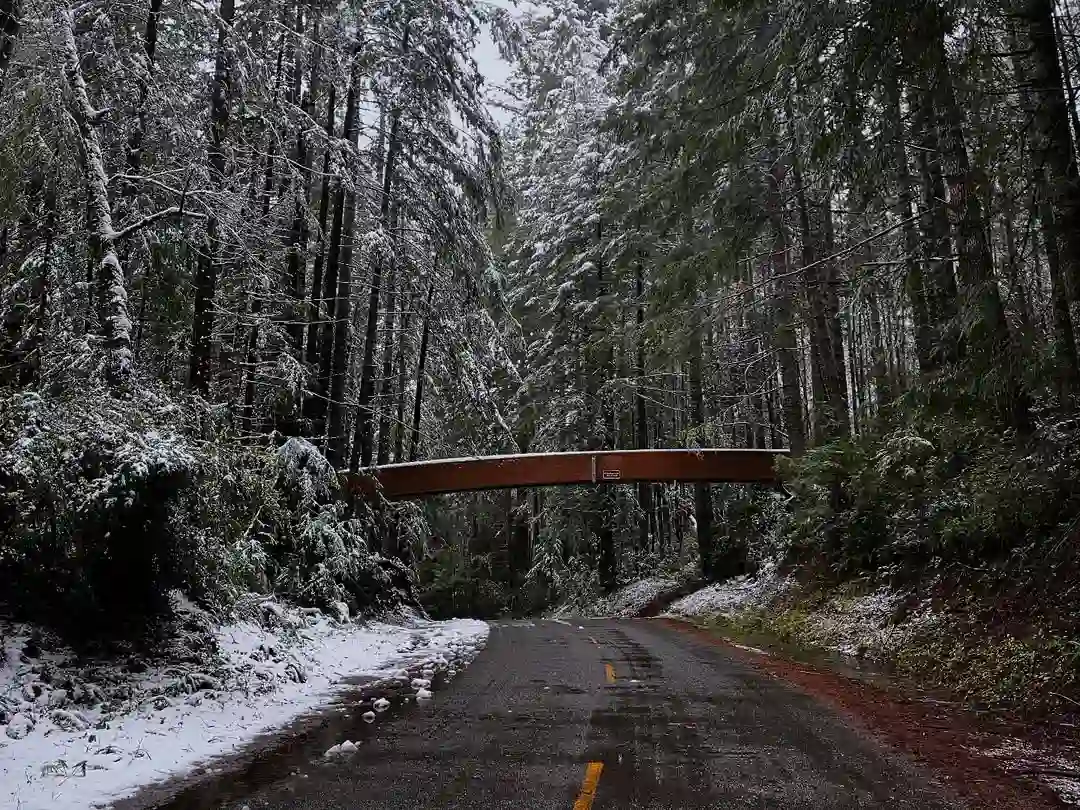
The Icon & The Issue: The name “Redwood National Park” conjures images of the world’s tallest trees. Yet, the park is a unique cooperative management area, combining federal land with three state parks.
This complex structure means many visitors to the region, numbering over 622,000 for the national park portion alone, often miss some of the most spectacular and accessible groves.
The Superior Escape: Prairie Creek Redwoods State Park, one of the state-managed partners, is arguably the heart of the Redwood Coast experience.
This 14,000-acre sanctuary protects not only magnificent old-growth redwood forests but also open meadows grazed by majestic herds of Roosevelt elk and 10 miles of pristine coastline.
It is home to Fern Canyon, a narrow gorge with 50-foot walls draped in a lush tapestry of ferns—a prehistoric landscape so cinematic it was used as a filming location for Jurassic Park 2.
With over 75 miles of hiking trails and a fraction of the national park’s designated visitor count (around 100,000 annually), Prairie Creek offers a more concentrated and diverse redwood ecosystem experience.
The administrative boundaries, not natural ones, often dictate where crowds gather; by focusing on this state park, visitors can find the true essence of the redwoods.
Insider’s Guide:
- Don’t Miss: A walk through Fern Canyon is an essential, otherworldly experience. Drive the Newton B. Drury Scenic Parkway, a 10-mile alternative to Highway 101 that winds through stunning old-growth forest.
- Best For: Primeval redwood forests, reliable elk viewing, and coastal exploration.
- Pro Tip: Access to Fern Canyon is via Davison Road, which has strict vehicle size limitations (8 feet wide, 24 feet long, no trailers). Always check road conditions before going, as creek crossings can be impassable.
| Metric | Redwood National Park | Prairie Creek Redwoods State Park |
| Annual Visitors | ~$622,883$ (Federal lands only) | ~$100,000$ |
| Key Feature | Tall Trees | Tall Trees, Fern Canyon & Roosevelt Elk |
| Ecosystem | Redwood Forest | Redwood Forest, Prairie & Coastline |
7. Instead of Denali, Discover Alaska’s Chugach State Park
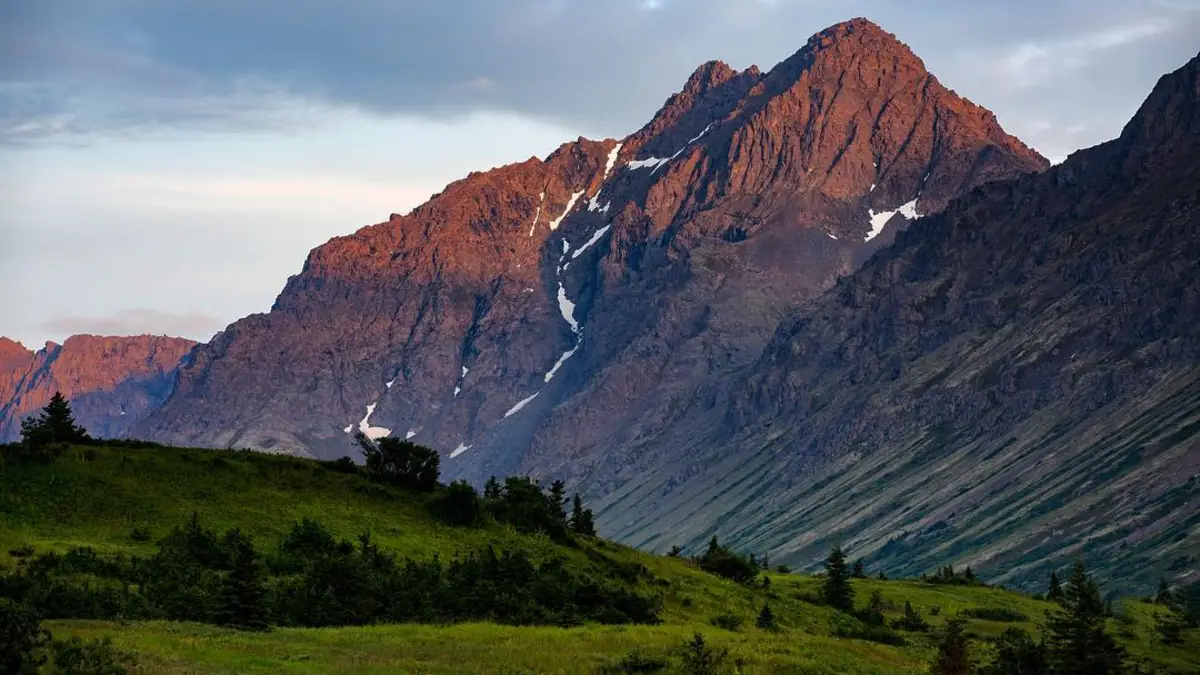
The Icon & The Issue: Denali National Park is the epitome of Alaskan wilderness, a six-million-acre expanse crowned by North America’s highest peak. Its remoteness is part of its allure, but also a challenge, requiring significant travel and planning for its nearly 500,000 annual visitors.
The Superior Escape: Chugach State Park offers a profound wilderness experience with unparalleled accessibility.
At 495,000 acres, it is one of the nation’s largest state parks, and its boundaries begin just seven miles from downtown Anchorage, making it a true “urban wilderness”. The park is Anchorage’s backyard, a playground of rugged peaks rising to 8,000 feet, vast glaciers, and pristine lakes.
With over 280 miles of trails, visitors can embark on a quick after-work hike or a multi-day backcountry trek.
Popular trails like Flattop Mountain offer panoramic views of the city and Cook Inlet, while the serene Eklutna Lake is perfect for kayaking and biking along its turquoise shores. Chugach redefines the concept of escape, proving that world-class adventure doesn’t have to be remote.
Insider’s Guide:
- Don’t Miss: The hike up Flattop Mountain is an Anchorage rite of passage for its stunning 360-degree views. The Eagle River Nature Center is a fantastic starting point for guided walks and accessing the historic Crow Pass Trail.
- Best For: Accessible hiking, mountain biking, kayaking, and wildlife viewing close to a major city.
- Pro Tip: Drive the scenic Seward Highway along Turnagain Arm, which forms the park’s southern boundary. Stop at Beluga Point or Windy Corner for a chance to see Dall sheep on the cliffs or beluga whales in the water.
| Metric | Denali National Park | Chugach State Park |
| Annual Visitors | ~$498,722$ (2023) | ~$500,000+$ (recreational) |
| Key Feature | Denali Peak, Remote Wilderness | Accessible Glaciers & Mountains |
| Proximity | Remote (Hours from major cities) | Borders Anchorage |
8. Instead of the Grand Canyon, Discover Texas’ Palo Duro Canyon State Park
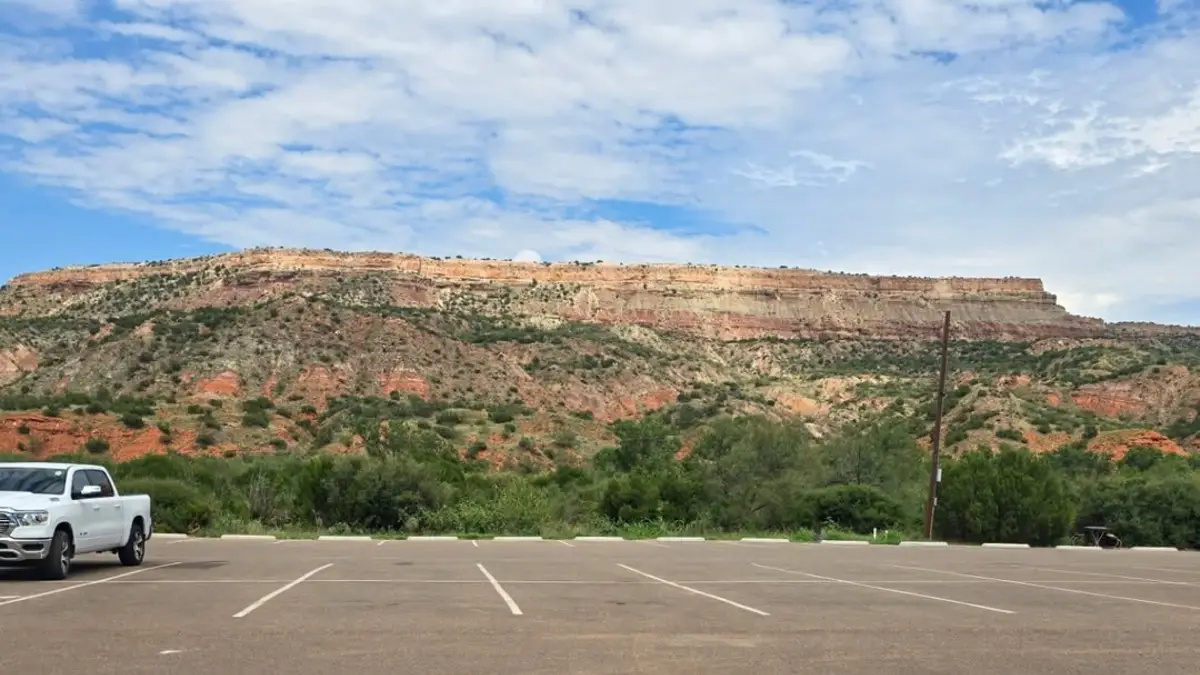
The Icon & The Issue: The Grand Canyon’s status as the world’s most famous canyon is undisputed, drawing 4.7 million people to its edge in 2022. This superlative status, however, overshadows other magnificent canyon systems in the country.
The Superior Escape: Palo Duro Canyon in the Texas Panhandle is the second-largest canyon in the United States, a fact that surprises many.
Stretching 120 miles long and dropping 800 feet from the plains, its colorful, stratified rock walls offer a spectacle of geological time. Unlike the Grand Canyon, where most visitors stay on the rim, Palo Duro invites exploration of its floor.
Over 30 miles of trails for hiking, biking, and horseback riding wind through the canyon. Visitors can camp under a vast, starry sky, stay in historic cabins built by the Civilian Conservation Corps, or watch a live musical performance in an amphitheater carved into the canyon wall.
With 442,242 visitors in 2022, Palo Duro offers an immense and personal canyon experience without the international crowds of its Arizona counterpart.
Insider’s Guide:
- Don’t Miss: The iconic Lighthouse Trail leads to the park’s signature hoodoo formation. In the summer, catch a performance of the TEXAS Outdoor Musical at the Pioneer Amphitheater.
- Best For: Hiking, horseback riding, and experiencing canyon life from the floor up.
- Pro Tip: Stay in one of the historic cabins on the canyon rim for spectacular sunrise views, or book a “glamping” site on the canyon floor for a more luxurious stay.28
| Metric | Grand Canyon National Park | Palo Duro Canyon State Park |
| Annual Visitors | ~$4.7$ Million (2022) | ~$442,242$ (2022) |
| Key Feature | World’s Largest Canyon | Second-Largest Canyon in the U.S. |
| Primary Access | Rim Views | Canyon Floor Trails |
9. Instead of the Everglades, Discover Florida’s Myakka River State Park
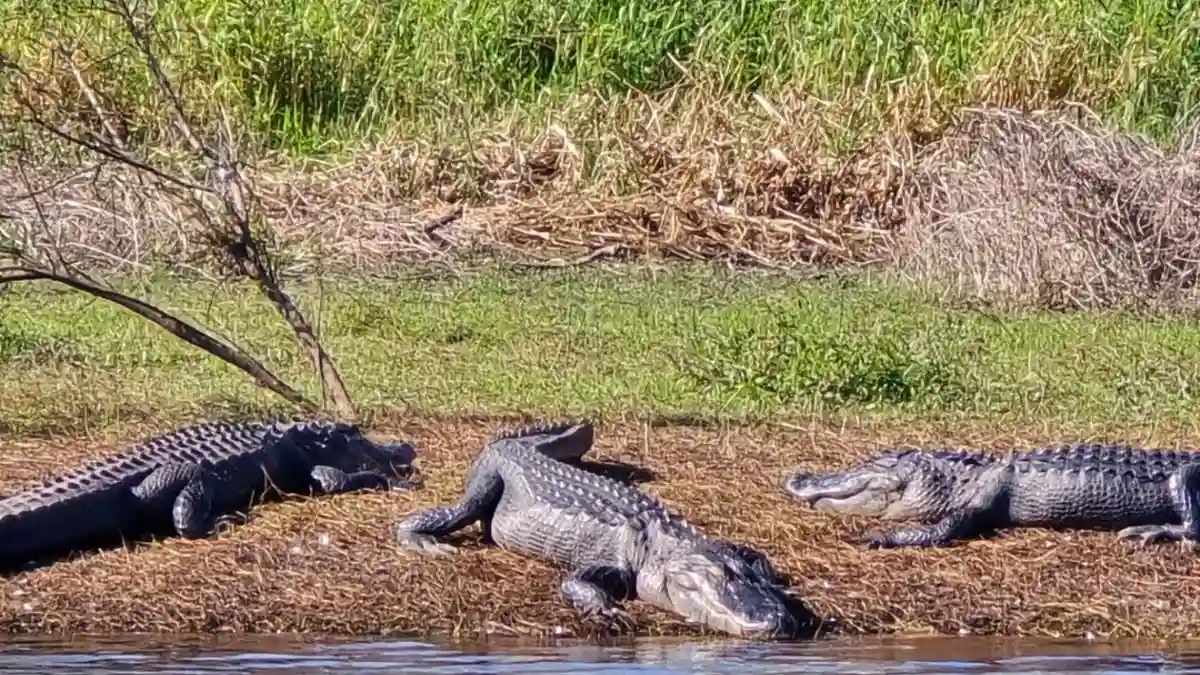
The Icon & The Issue: Everglades National Park protects a unique and vital ecosystem, the “River of Grass,” drawing over 1.1 million people a year to its vast wetlands. Exploring its immense 1.5-million-acre expanse can be a daunting task.
The Superior Escape: Myakka River State Park offers a perfect microcosm of that same “Real Florida” environment in a more contained and accessible package.
One of Florida’s oldest and largest state parks, it protects 58 square miles of unspoiled wetlands, prairies, hammocks, and pinelands.
The Myakka River, Florida’s first designated “Wild and Scenic River,” flows through the park, its banks teeming with alligators and turtles, while the skies are filled with osprey and limpkins.
Visitors can take an airboat tour on the lake, walk among the treetops on the Myakka Canopy Walkway, or watch for wildlife from the Birdwalk. With around 260,000 annual visitors, Myakka provides an immersive and manageable glimpse into Florida’s iconic natural heritage.
Insider’s Guide:
- Don’t Miss: The Myakka Canopy Walkway, the first of its kind in North America, offers a unique treetop perspective of the oak and palm hammock. The airboat tours on Upper Myakka Lake are a classic Florida experience.
- Best For: Abundant and easily accessible wildlife viewing, especially alligators and birds.
- Pro Tip: The park can experience seasonally wet conditions. For the most up-to-date information on trail conditions and tour availability, especially after storms, call the ranger station before visiting.
| Metric | Everglades National Park | Myakka River State Park |
| Annual Visitors | ~$1.1$ Million (2022) | ~$259,913$ (2023) |
| Key Feature | “River of Grass” Ecosystem | “Wild and Scenic” River Ecosystem |
| Signature Experience | Vast Wetland Exploration | Canopy Walkway & Airboat Tours |
10. Instead of Cuyahoga Valley, Discover New York’s Watkins Glen State Park
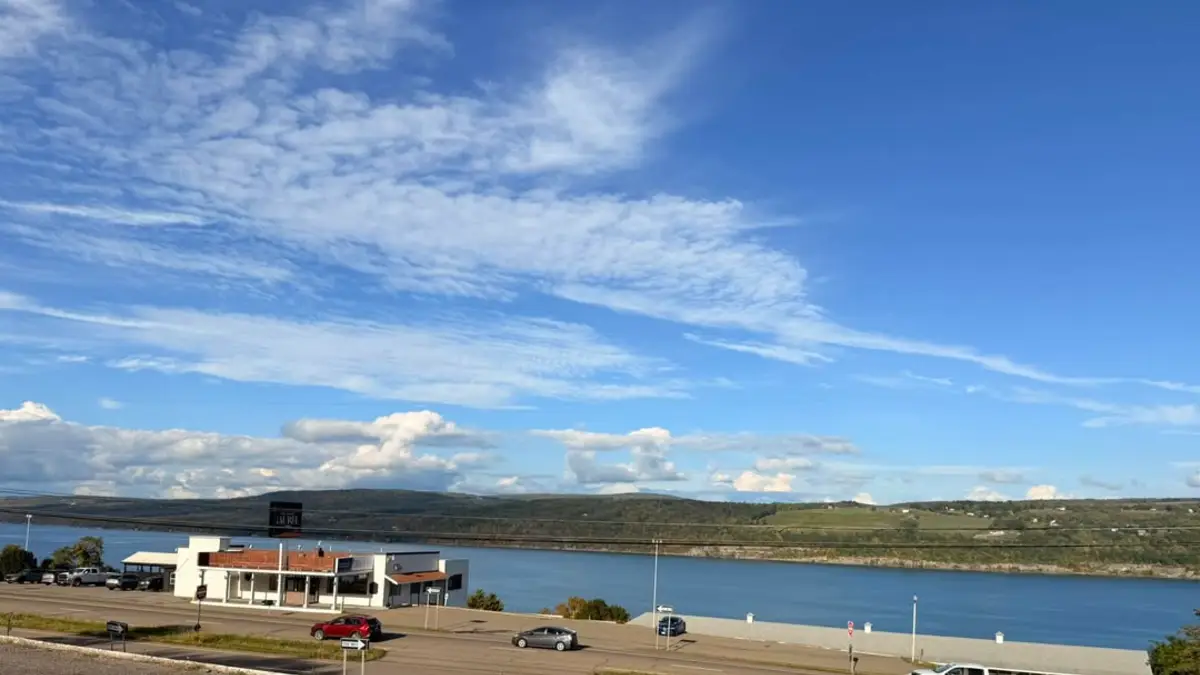
The Icon & The Issue: Cuyahoga Valley National Park is a unique urban park, preserving a sprawling river valley between Cleveland and Akron and attracting nearly 2.9 million visitors annually. Its beauty is spread across 33,000 acres of reclaimed land.
The Superior Escape: For a more concentrated dose of natural drama, Watkins Glen State Park is unmatched.
Within a two-mile span, the park’s Glen Creek plunges 400 feet through a spectacular gorge, creating 19 distinct waterfalls along its course.
The main Gorge Trail is a masterpiece of stonework, winding over and under waterfalls, through tunnels cut into the rock, and past water-sculpted cliffs.
It is an immersive experience of water, stone, and spray. While it sees a respectable 1.2 million visitors, the park’s design focuses all the wonder into one unforgettable walk, making it a prime example of a state park that excels by highlighting a single, breathtaking geological feature.
Insider’s Guide:
- Don’t Miss: The Gorge Trail is the main event and is typically open from May to October. Walking behind Cavern Cascade is a highlight.
- Best For: Waterfall lovers and those seeking a dramatic, accessible hike.
- Pro Tip: To avoid the biggest crowds on the Gorge Trail, start your hike from the Upper Entrance and walk down, then take the seasonal shuttle back to the top.
| Metric | Cuyahoga Valley National Park | Watkins Glen State Park |
| Annual Visitors | ~$2.9$ Million (2023) | ~$1.2$ Million (2023) |
| Key Feature | Reclaimed River Valley | Water-Carved Gorge with 19 Waterfalls |
| Scale | Expansive & Diffuse | Contained & Concentrated |
11. Instead of Gateway Arch, Discover Missouri’s Ha Ha Tonka State Park
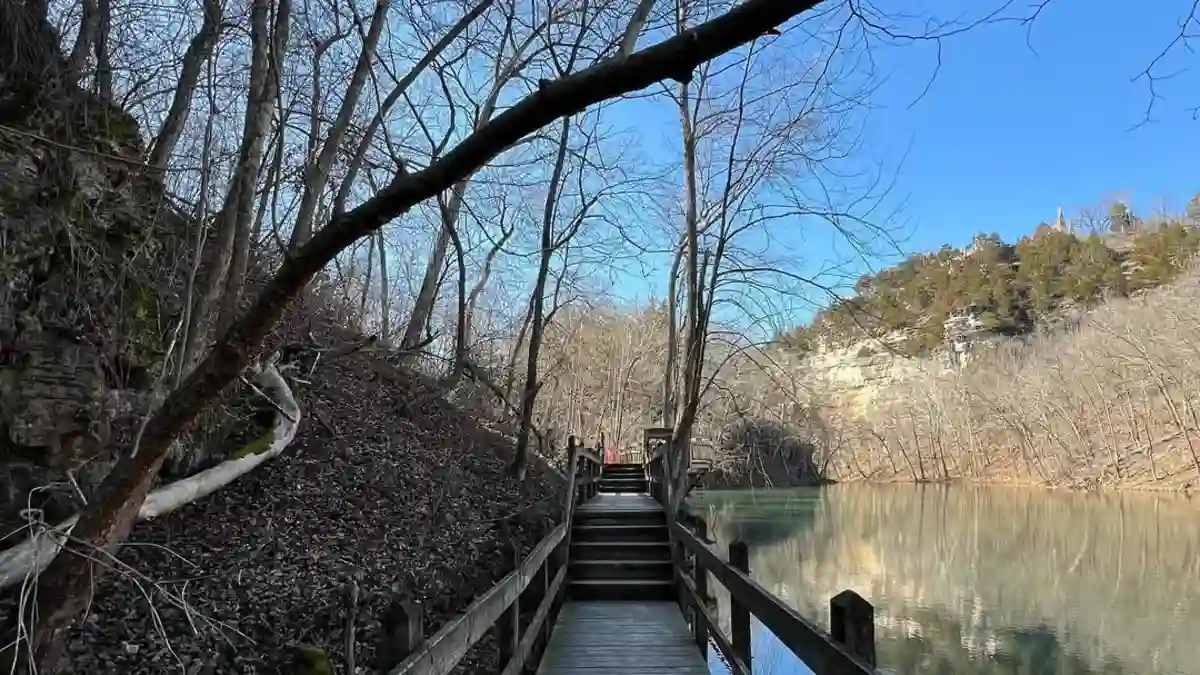
The Icon & The Issue: Gateway Arch National Park in St. Louis is a monument to American expansion, a singular, stunning piece of architecture that draws over 1.1 million visitors to the city’s riverfront.
The Superior Escape: For an experience that blends fascinating human history with incredible natural geology, Ha Ha Tonka State Park is a Missouri treasure.
The park is a geologic wonderland, featuring sinkholes, caves, a massive natural bridge, and Missouri’s 12th-largest spring.
Overlooking this landscape from a high bluff are the haunting stone ruins of a turn-of-the-century castle, the dream of a wealthy Kansas City businessman that was destroyed by fire in 1942.
A series of trails and boardwalks connects these features, allowing visitors to explore both the geological curiosities and the romantic ruins. With 533,745 visitors in 2024, Ha Ha Tonka offers a multi-layered journey through nature and history that a single-focus monument cannot match.
Insider’s Guide:
- Don’t Miss: Exploring the castle ruins and taking in the view of the Lake of the Ozarks is essential. The boardwalk trail down to the brilliant blue Ha Ha Tonka Spring is a beautiful walk.
- Best For: A unique mix of history, geology, and scenic lake views.
- Pro Tip: Any season is a good time to visit, but early November offers beautiful fall colors, while a crisp winter day provides stark, beautiful contrasts among the stone ruins and pines.
| Metric | Gateway Arch National Park | Ha Ha Tonka State Park |
| Annual Visitors | ~$1.1$ Million (2021) | ~$533,745$ (2024) |
| Key Feature | Man-Made Architectural Icon | Natural Geology & Historic Castle Ruins |
| Experience | Urban Monument | Natural & Historical Exploration |
12. Instead of Rocky Mountain, Discover Colorado’s Eldorado Canyon State Park
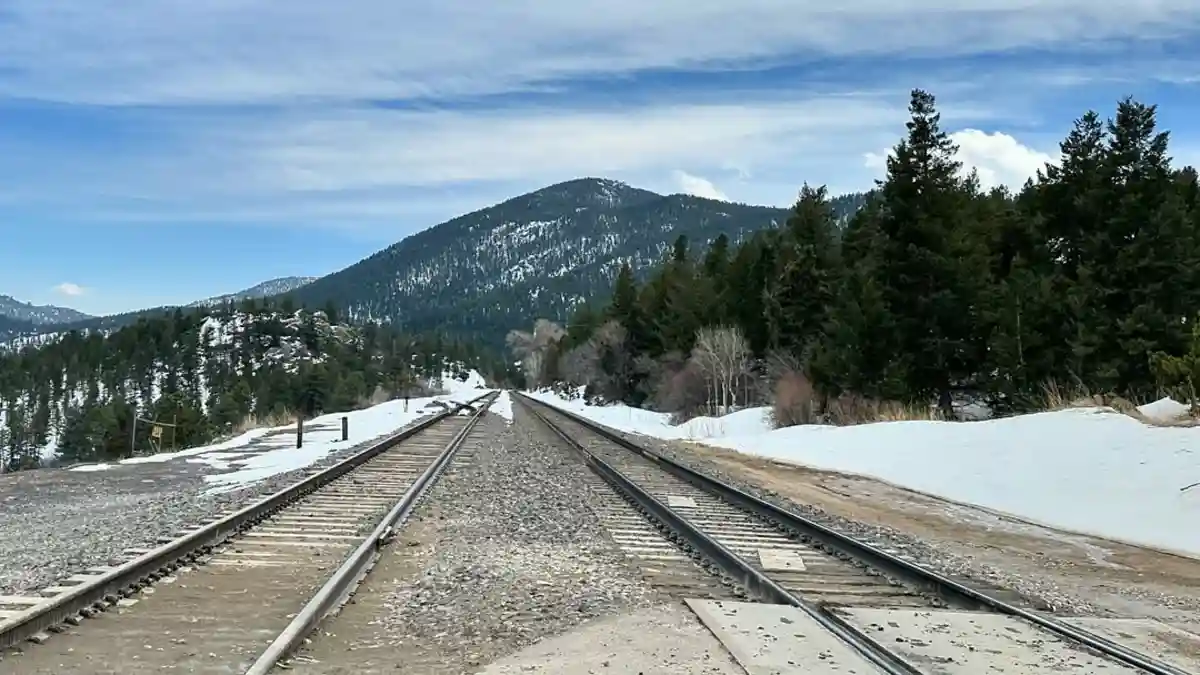
The Icon & The Issue: Rocky Mountain National Park is the quintessential alpine park, a high-altitude paradise of jagged peaks and scenic drives that attracts 4.1 million visitors a year, requiring a timed reservation system to manage access.
The Superior Escape: Tucked into the foothills just south of Boulder, Eldorado Canyon State Park is a specialist’s paradise.
While it may not have RMNP’s soaring 14,000-foot peaks, its sheer, golden sandstone cliffs are world-renowned in the rock-climbing community, offering over 500 technical routes.
The park’s beauty is not just for climbers; hikers can enjoy trails that wind along scenic South Boulder Creek or ascend to panoramic views of the Continental Divide. The park’s popularity with climbers has also led to a timed reservation system on weekends, but its over 500,000 annual visitors are a fraction of RMNP’s.
Eldorado Canyon is a prime example of how a state park can achieve global recognition for niche excellence, becoming a premier destination for a specific pursuit while remaining a quieter gem for the general public.
Insider’s Guide:
- Don’t Miss: Even if not climbing, watching the skilled climbers on the sheer walls of The Bastille and Redgarden Wall is a spectacle. The easy, wheelchair-accessible Fowler Trail offers fantastic canyon views without the climb.41
- Best For: World-class rock climbing, streamside picnicking, and hiking with dramatic cliff views.
- Pro Tip: Parking is extremely limited. On summer weekends and holidays, use the free Eldo Shuttle from Boulder to avoid access issues.43
| Metric | Rocky Mountain National Park | Eldorado Canyon State Park |
| Annual Visitors | ~$4.1$ Million (2023) | ~$500,000+$ (pre-reservations) |
| Key Feature | High-Altitude Alpine Scenery | World-Class Rock Climbing Cliffs |
| Focus | General Mountain Recreation | Niche Sport Excellence |
13. Instead of Yosemite, Discover Oregon’s Silver Falls State Park
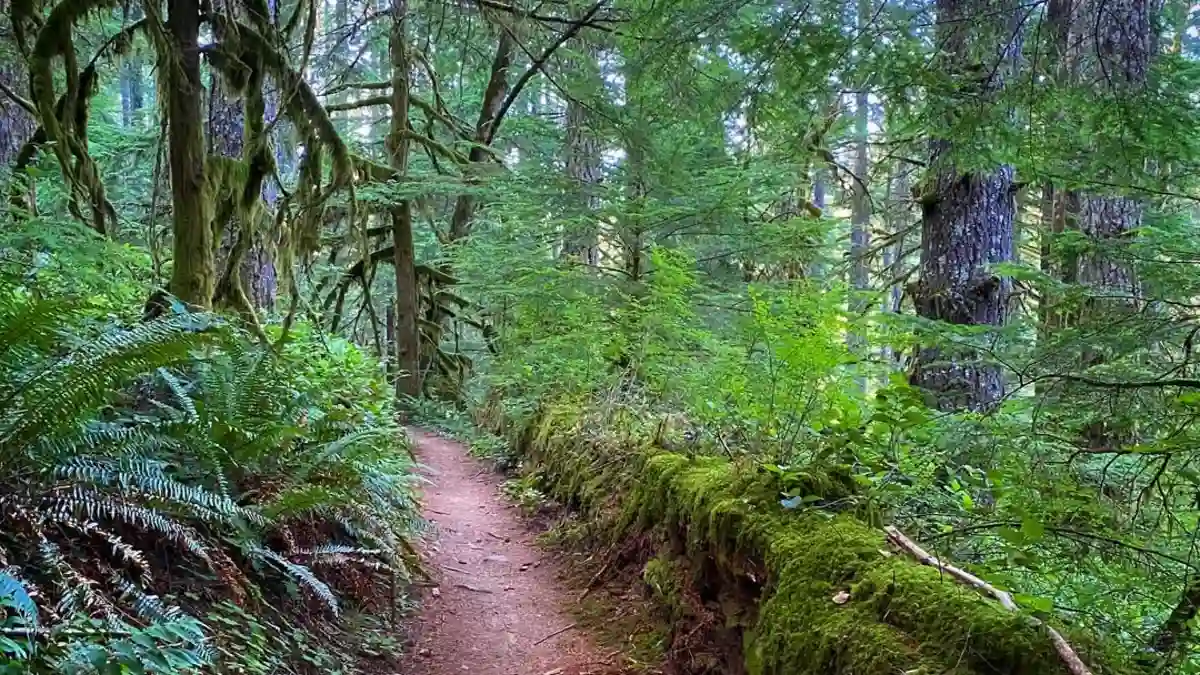
The Icon & The Issue: Yosemite’s granite monoliths and iconic waterfalls are legendary, attracting over 4 million visitors who often face significant traffic and congestion to see its famous, but geographically dispersed, sights.
The Superior Escape: Often called the “crown jewel” of the Oregon State Parks system, Silver Falls State Park offers a uniquely curated and immersive waterfall experience.
Its main feature is the Trail of Ten Falls, a spectacular 7.2-mile loop hike that passes above, beside, and even behind ten stunning waterfalls, including the majestic 177-foot South Falls.
Unlike Yosemite, where seeing multiple waterfalls requires driving between trailheads, Silver Falls presents a “waterfall crawl” on a single, continuous trail.
This brilliant design makes a grand natural spectacle accessible and digestible in one incredible hike, set within a lush temperate rainforest of Douglas firs, hemlocks, and cedars.


